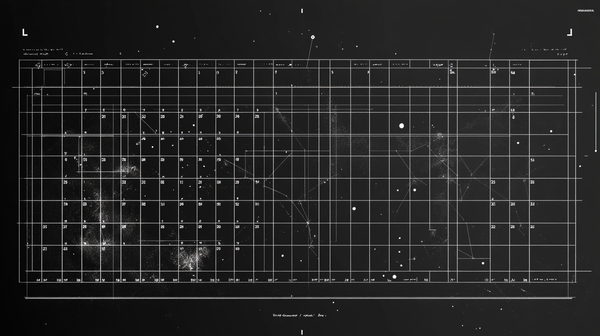Understanding Viability: The Capacity to Work Successfully Under Pressure
Viability is the ability to function successfully under pressure, It emerges through five dimensions: feedback integration, boundary function, adaptive capacity, resource allocation, and coherence maintenance. These interconnected aspects determine effectiveness when facing real challenges.

When systems face pressure, whether from environmental changes, resource constraints, or market interference, some maintain their ability to function successfully while others do not. This distinction between remaining viable and merely existing appears across all types of systems. A business might keep its doors open while losing the ability to serve customers effectively. A relationship might persist while no longer providing mutual support. A skill set might remain technically present but become impossible to apply effectively under new conditions.
This capacity for sustained function represents a directional pattern of adaptive development beyond merely maintaining operations. Living reorganize in response to constraints in ways that tend toward increased coherence and capability over time. This developmental tendency, visible across all scales of life, makes viability not just about survival but about the conditions that enable flourishing.
Understanding what enables sustained function despite disruptive pressure provides practical insight for building more robust systems. This capacity, which we call viability, operates through specific dimensions that can be recognized, assessed, and deliberately developed.
Viability Versus Related Concepts
Viability, as discussed here, is the ability to function successfully within constraints and under pressure. A viable business can operate profitably despite competition, a viable technology works despite limitations, and a viable team functions effectively despite challenges.
Viability differs from several related concepts in important ways.
Survival means continuing to exist, with or without successful function. A company bleeding cash while staying technically operational survives without viability. A marriage that persists despite complete breakdown in communication and support has survival but not viability. Survival is binary: you exist or you don't. Viability exists on a spectrum of how successfully you can function.
Resilience means the ability to recover from disruption and return to a previous state. A team that bounces back after crisis demonstrates resilience. But if they return to the same state without maintaining function during the disruption, they've shown resilience without continuous viability. Viability includes operating successfully through challenges, not only recovering afterward.
Success means achieving specific goals or outcomes. A product launch might succeed in meeting its targets while depleting the team's ability to function on future projects. Success can be temporary and narrow. Viability means sustained ability to function successfully across time and changing conditions.
These distinctions matter practically. Many struggling systems need to establish basic viability before pursuing vitality. A team barely meeting deadlines shouldn't focus on breakthrough innovation but on building sustainable operational capacity. An individual overwhelmed by daily demands needs viable routines before pursuing ambitious growth. Understanding where a system falls on the spectrum from dysfunction through survival and viability to vitality helps determine appropriate interventions.
The Five Dimensions That Enable Viable Function
Through observing how systems maintain successful function under pressure, five interdependent dimensions emerge as fundamental. These dimensions determine whether a system can work effectively when facing constraints, challenges, and change. Each dimension can be a source of strength when well-developed or a point of failure when compromised.
Feedback Integration enables systems to detect and respond to changing conditions. A viable business collects data and maintains mechanisms to recognize important signals and adjust operations accordingly. A viable relationship involves partners who notice and respond to each other's changing needs. Without accurate feedback about what's working and what isn't, no system can maintain successful function when conditions shift. The mechanism is straightforward: systems that suppress negative feedback or ignore warning signals lose their ability to work successfully as misalignment grows between their operations and reality.
Boundary Function determines what the system takes responsibility for versus what remains external. Viable systems maintain boundaries that protect core functions while enabling necessary exchanges. An organization with healthy boundaries protects essential operations from disruption while remaining open to necessary resources and partnerships. An individual with viable boundaries can refuse requests that would compromise their ability to function while maintaining beneficial connections. When boundaries are too rigid, systems stagnate from lack of inputs. When boundaries collapse, systems exhaust themselves trying to control what lies beyond their influence. Either extreme undermines the ability to work successfully.
Adaptive Capacity allows systems to modify their structure while preserving core functions. Rather than growth or expansion, adaptive capacity allows for reorganization in order to maintain effectiveness under changing conditions. A viable institution adjusts its practices when regulations change without losing its ability to serve its mission. A viable professional modifies their working methods when technology shifts without losing their core expertise. Systems need enough stability to maintain function but enough flexibility to adjust when current structures no longer work. Without adaptive capacity, systems become trapped in patterns that once enabled success but now prevent it.
Resource Allocation balances the resources needed for current operations with reserves for handling challenges. Viable systems don't maximize efficiency at the expense of all buffers; they maintain enough slack to handle unexpected pressures. A viable household budget covers daily expenses while maintaining an emergency fund. A viable work schedule meets current commitments while preserving capacity to handle urgent issues. Systems that consume every available resource for normal operations can't maintain function when pressure increases. But systems that hoard all resources for future challenges can't maintain current operations. Viability requires balanced allocation.
Coherence Maintenance ensures different parts of the system support rather than undermine each other. A viable strategy aligns different departments toward compatible goals rather than having them work at cross-purposes. A viable life structure integrates work, family, and personal needs without constant internal conflict. When coherence breaks down, systems waste energy on internal friction rather than directed function. Marketing pulls one direction while operations pulls another. Work commitments conflict with family needs. The system might survive this internal conflict, but it can't work successfully while fighting itself.
These dimensions interact dynamically. Feedback integration helps calibrate boundaries: knowing what signals matter helps determine what to let in or keep out. Clear boundaries enable focused resource allocation: understanding what you're responsible for prevents waste on uncontrollable factors. Adequate resources enable adaptation: you need slack to experiment with new configurations. Adaptation must maintain coherence: changes that improve one area while degrading others reduce overall viability. This interconnection means viability emerges from integrating all dimensions, not from excellence in any single area.
Why Viability Matters: An Evaluative Framework
Understanding viability offers an evaluative criteria for assessing systems, behaviors, and decisions. When we recognize viability as the capacity for sustained development under real conditions, we gain practical standards for evaluation without appealing to abstract ideals.
Actions, structures, and patterns can be assessed by their contribution to viability. Those that enhance a system's capacity to maintain function while adapting to constraints support its developmental trajectory. Those that undermine these capacities degrade the system's ability to thrive. This is a structural assessment: observing what enables versus what prevents sustained flourishing.
This evaluative dimension transforms viability from a concept to observe into a criterion for decision-making. When facing choices, we can ask: Which option enhances our capacity to maintain function while developing? Which preserves our ability to adapt without losing coherence? These questions provide practical guidance grounded in observable patterns rather than abstract principles.
The Spectrum of Function from Collapse to Vitality
Systems exist on a spectrum based on how well they maintain these five dimensions. Understanding this spectrum helps diagnose current state and identify appropriate development priorities.
Collapse represents complete breakdown where systems cease to function entirely. A collapsed business has shut down operations. A collapsed relationship has ended. A collapsed skill has become completely unusable. These systems no longer exist as functional entities.
Dysfunction means operating in an impaired or abnormal way that undermines intended purpose. Dysfunctional systems maintain operations but in ways that create problems rather than solutions. A dysfunctional organization holds meetings that create confusion rather than clarity, follows processes that impede rather than enable work, maintains structures that generate conflict rather than coordination. These systems exhibit feedback distortion (misreading signals), boundary confusion (unclear domains), maladaptive patterns (changes that worsen problems), resource drain (consumption without productivity), and internal friction (parts undermining each other).
Basic Function represents working successfully but only under favorable conditions. These systems handle routine feedback, maintain adequate boundaries, adapt incrementally, allocate resources to meet predictable needs, and coordinate sufficiently for normal operations. They work when things go as expected but struggle when pressure increases. A team with basic function meets deadlines when everything goes smoothly but falls apart when unexpected challenges arise.
Viability means maintaining successful function despite pressure and constraints. This is our focus because it represents the critical threshold: the difference between systems that work only in ideal conditions and those that sustain function when faced with real-world challenges. Viable systems integrate feedback from multiple sources, calibrate boundaries for different contexts, reorganize proactively to maintain effectiveness, balance current operations with challenge reserves, and maintain alignment despite pressures. They continue working successfully through disruption. A viable organization maintains customer service quality during restructuring. A viable individual maintains professional effectiveness despite personal challenges.
Vitality represents the full expression of viability. It is a demonstration increasing coherence, responsiveness, and developmental momentum. Vitality is viability's directional tendency made manifest. While viability ensures sustained function, vitality emerges when that function generates adaptive development. A vital system doesn't just handle pressure; it transforms pressure into growth. The relationship is directional: viability creates the structural conditions from which vitality can emerge. Vital systems detect emerging patterns before they fully manifest, dynamically optimize boundaries for each situation, creatively reconfigure to discover new possibilities, generate resources rather than simply managing them, and achieve synergistic integration where the whole exceeds the sum of parts.
Within this spectrum, the same dimensions that cause dysfunction when they fail can generate vitality when they excel. Feedback systems that distort information when broken can detect subtle patterns when highly developed. Boundaries that cause isolation when too rigid can enable optimal exchange when dynamically managed. The dimensions aren't merely problems to fix but capabilities to develop.
Recognizing Viability Patterns
Viable systems demonstrate distinctive patterns that distinguish them from those merely surviving or requiring ideal conditions to function.
Systems with strong viability handle routine pressures without constant crisis. Challenges become information about needed adjustments rather than existential threats. When setbacks occur, these systems maintain core operations while adapting their approach. They continue functioning during disruption rather than only bouncing back afterward. They maintain reserves for unexpected challenges rather than operating at maximum capacity continuously, understanding that slack isn't waste but preparation. Perhaps most importantly, they sustain their ability to work successfully without depleting connected systems, maintaining positive relationships with employees, suppliers, customers, and communities.
By contrast, systems lacking viability show different patterns. Each challenge threatens breakdown because there are no reserves to absorb disruption. Problems cascade as one failure triggers others, creating expanding circles of dysfunction. Operations gradually degrade as small compromises accumulate into major deficiencies. The system might persist, but it can't maintain successful function when pressure increases. Recovery, when it happens, takes increasingly longer and remains incomplete, leaving the system more vulnerable to the next disruption.
Between these extremes, systems with basic function work successfully under normal conditions but struggle when pressed. They might maintain operations during predictable busy periods but fail during unexpected surges. They handle routine problems but not novel challenges. They function in stable environments but can't maintain effectiveness through change. Understanding these patterns helps identify whether a system needs to build basic viability or can pursue higher development toward vitality.
Context Shapes Viability Requirements
What enables successful function in one context might undermine it in another. A startup's fluid boundaries and rapid pivoting, essential for finding product-market fit, would destroy a nuclear power plant's viability where rigid protocols ensure safety. An emergency room's high-intensity, reactive patterns that enable life-saving responses would prevent a research lab from maintaining the patient investigation needed for breakthrough discoveries.
These varying contexts don't invalidate viability as a criterion. They demonstrate its local nature. Viability always emerges through engagement with specific conditions rather than through universal prescriptions. What remains constant is the directional pattern: systems that maintain viability tend toward enhanced coherence and capability within their particular constraints. The jazz musician and surgeon both demonstrate viability, but through patterns appropriate to their distinct realities.
This context-dependency means assessing viability requires asking "viable for what purpose and under which conditions?" A system viable for efficiency might lack the redundancy needed for reliability. A structure viable in resource-abundant environments might fail under scarcity. An organization viable for stable operations might lack the flexibility for innovation.
Consider how different temporal contexts affect viability requirements. In crisis situations, viability might require rapid feedback processing, permeable boundaries for resource acquisition, dramatic structural reorganization, present-focused resource allocation, and temporary acceptance of reduced coherence. In stable growth periods, viability might involve patient signal integration, selective boundary permeability, incremental adaptation, future-weighted resource investment, and careful coherence cultivation.
Cultural contexts similarly shape what enables successful function. Organizations in high-trust cultures might maintain viability with more permeable internal boundaries and distributed decision-making, while low-trust environments might require clearer boundaries and centralized control. Individual viability in collectivist contexts might emphasize group coherence and shared resources, while individualist contexts might prioritize personal boundaries and individual resource control.
Professional contexts create distinct viability requirements. A surgeon's viability requires precise boundaries (sterile field), immediate feedback integration (patient vitals), limited adaptation during procedures (following protocols), concentrated resource allocation (full attention), and absolute coherence (team coordination). A jazz musician's viability requires permeable boundaries (responding to audience), fluid feedback integration (listening to ensemble), constant adaptation (improvisation), distributed resources (attention across multiple inputs), and dynamic coherence (maintaining groove while exploring).
Building Viability Deliberately
Understanding these dimensions enables deliberate cultivation of developmental capacity. This means recognizing that viability isn't a static state to achieve but a dynamic pattern to maintain and enhance. Systems with strong viability develop increased capacity through engagement with constraints. Each challenge becomes an opportunity for reorganization that enhances rather than merely preserves function.
Enhancing feedback integration requires more than collecting information. It involves developing recognition of important signals, distinguishing meaningful patterns from noise, and creating channels for information to flow without distortion. A team builds feedback capacity by establishing regular practices that surface problems early, but more importantly by developing shared understanding of what signals matter for maintaining successful function.
Calibrating boundaries goes beyond setting rules to developing dynamic adjustment capabilities. An individual builds boundary viability by learning to recognize when engagement serves function versus when it creates dysfunction. This means understanding boundaries as selective membranes that can adjust permeability based on current needs and pressures. The development process involves experimenting with different boundary settings and observing their effects on the ability to work successfully.
Expanding adaptive capacity requires practicing reorganization before pressure makes it mandatory. Organizations build this capacity through controlled experiments that test new configurations while maintaining core operations. The key insight is that adaptation is a capability that must be developed through practice, not something that spontaneously emerges when needed. Systems that only change when forced rarely change successfully.
Aligning resource allocation involves mapping where resources go versus where they enable successful function. This often reveals surprising misalignments: activities that consume resources without supporting viability, or critical functions starved of support because their contribution isn't immediately visible. Building resource viability means maintaining buffers for challenges while meeting current needs, understanding that efficiency pushed too far becomes fragility.
Strengthening coherence requires identifying and resolving internal contradictions that prevent successful function. This might involve clarifying priorities to align different activities, establishing shared frameworks that enable coordination, or developing communication patterns that surface and address conflicts before they become entrenched. Coherence isn't a state to achieve but a dynamic balance to maintain as the system faces different pressures.
Viability Within Connected Systems
No system maintains viability in isolation. This is a fundamental principle about how reality operates. Systems exist within nested contexts where individual viability depends on and contributes to collective viability. This isn't merely practical observation but structural reality: the boundaries between systems are functional distinctions, not absolute separations. Understanding viability means recognizing these patterns of mutual dependence and influence.
This creates both constraints and opportunities. A system cannot maintain its ability to work successfully indefinitely while undermining connected systems. Eventually, environmental degradation compromises internal function. A company that depletes its suppliers loses supply chain viability. An individual who exhausts their support network loses crucial backup when facing challenges.
Conversely, contributing to connected systems' viability often enhances internal capacity. A company that helps suppliers build viability creates a more stable supply chain. A manager who develops team members' ability to function successfully builds organizational capacity. An individual who strengthens their community's viability creates a more supportive environment for their own challenges.
Understanding these connections transforms how we approach building viability. Instead of optimizing individual systems in isolation, we recognize that sustainable viability emerges through mutual support. This doesn't mean sacrificing individual function for collective benefit but finding configurations where individual and collective viability reinforce each other.
The Practical Value of Understanding Viability
Understanding viability as the ability to work successfully under pressure, distinct from mere survival or ambitious vitality, provides practical guidance for assessment and development. Instead of asking "How can we grow?" we first ask "Can we maintain function when pressure increases?" Instead of pursuing immediate expansion, we might first build the capacity to handle current operations sustainably.
Beyond operational benefits, understanding viability helps systems construct meaning through engagement with real constraints. When individuals and organizations recognize how their struggles with pressure can lead to enhanced capacity, daily challenges transform from obstacles into development opportunities. This isn't positive thinking but recognition of how meaning emerges through navigating real limitations rather than avoiding them.
This focus on viability helps identify appropriate priorities. A struggling small business might need to establish viable operations before pursuing growth. An overwhelmed individual might need to build sustainable routines before taking on new challenges. A relationship might need to establish viable communication patterns before attempting major life changes. Building viability creates the foundation for future development without requiring immediate expansion.
The five dimensions provide concrete assessment criteria. Rather than vague notions of "health" or "success," we can evaluate specific capacities: How well do we integrate feedback? Are our boundaries appropriate for our context? Can we adapt while maintaining function? Do we balance current needs with reserves for challenges? Do our different parts work together or against each other?
Most importantly, understanding viability helps distinguish between problems that threaten successful function and those that merely limit growth. Not every system needs to pursue vitality; many need to establish or maintain basic viability. Not every challenge requires transformation; many require sustaining function despite pressure. Not every goal involves expansion; many involve working successfully within constraints.
In a world of competing frameworks and methodologies, viability offers assessment based on observable patterns: Does this enhance our capacity to function and develop under real conditions? This question cuts through ideological debates to focus on demonstrated contribution to sustained flourishing.
This understanding provides practical tools for building more robust systems capable of maintaining successful function despite real-world pressures. Whether applied to individuals navigating life challenges, organizations facing market pressures, or communities handling social change, the focus on viability offers a clear and achievable target: the capacity to work successfully even when conditions aren't ideal.
This understanding provides practical tools for building more robust systems capable of maintaining successful function despite real-world pressures. Whether applied to individuals navigating life challenges, organizations facing market pressures, or communities handling social change, the focus on viability offers a clear and achievable target: the capacity to work successfully even when conditions aren't ideal. See Viability Systems for more.





